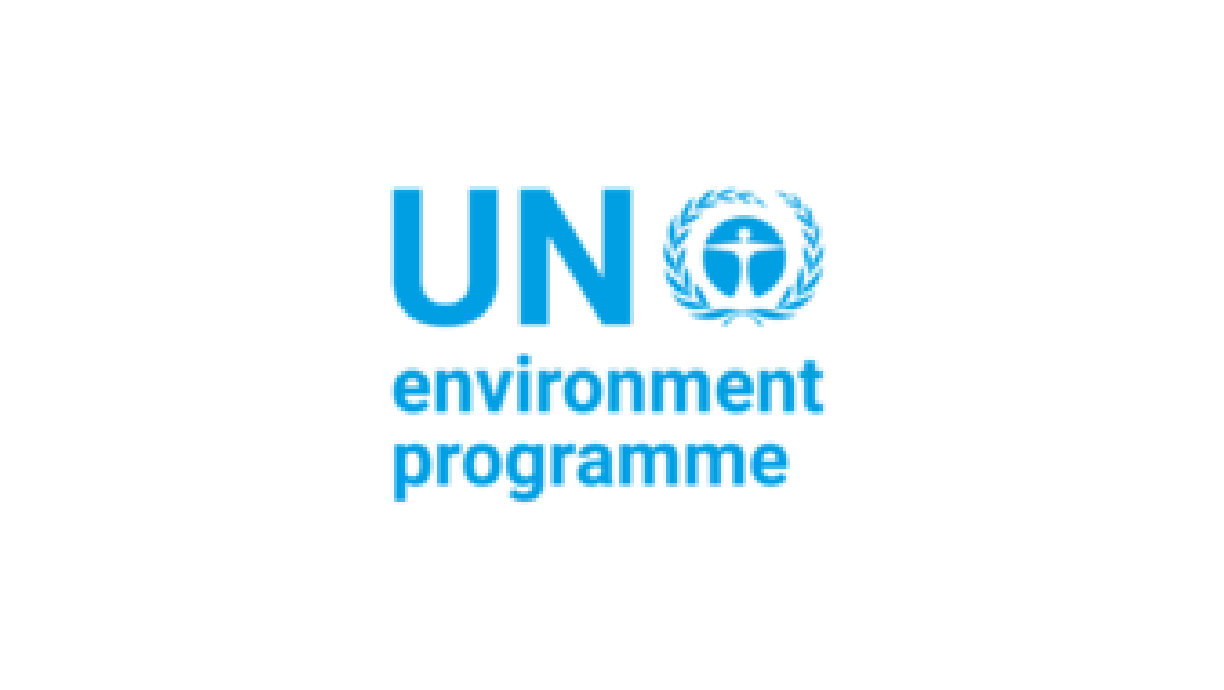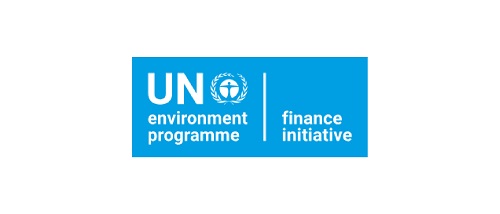Geoff Summerhayes speaks at the ClimateWise and University of Cambridge Institute for Sustainable Leadership
The following speech was delivered by the Geoff Summerhayes, Chair, Sustainable Insurance Forum, at an event hosted by ClimateWise and University of Cambridge Institute for Sustainable Leadership in London on 22 February, 2019.
Good afternoon and thank you for inviting me to address you in London, where I’m having to quickly adjust to a bracing change in temperature compared to my home in Sydney.
The Australian summer is rarely mild, but this one has been particularly intense, with January officially the hottest month ever recorded by our Bureau of Meteorology1. In parts of the inland, temperatures over recent weeks have peaked at close to 50 degrees Celsius. At that temperature, the ability of people and animals to safely go about their daily lives is seriously impeded. Working or playing outside is dangerous. Compounding the situation, vast areas of the continent, mostly farming communities, are in severe drought. Rivers have dried up, fish are dying and livestock are starving. At the other extreme, the city of Townsville in Queensland’s north is recovering from a one in 100 year flood. Parts of the city that were thought to be out of the reach of even the worst inundation were flooded, and the water wasn’t the only danger, as you can see in these photos.
Extreme weather and the hardship it brings are nothing new for Australia, which is lovingly described in one of the country’s most famous poems as a land of “droughts and flooding rains”. Scientific evidence points to both the frequency and severity of extreme weather events intensifying further over coming years due to climate change. Despite this, Australia – like many other countries – still lacks the political consensus needed to respond to the threat with the urgency scientific evidence suggests it deserves. The debate has typically centred around the economic cost of acting, with sceptics alternatively arguing that climate change is a con, or overstated, or that reducing carbon emissions will harm Australia’s economy at the expense of rivals. No doubt many of you have heard similar arguments in your own countries.
One notable climate change sceptic is my mother. Now 81, she’s lived most of her life on the land in Western Australia and still breeds horses. For the past 30 years, she’s been attending a horse race meeting in the temperate south of Western Australia. A few weeks ago, for the first time in its history, the race meet was cancelled due to heat. When I spoke to my mother about it, she was worried about whether she’d be able to get a refund for her accommodation. She also noted that the caterers, owners, trainers, bookies and others employed at the meet would have lost money. If they had insurance, then insurers would have taken a haircut too. Seizing the opportunity, I told my mother (while trying to disguise the note of vindication in my voice) that this was an example of climate-related financial risk. And for the first time, I sensed a breakthrough. “Yeah, I understand. I get it,” she said.
What this small example demonstrates is that climate change is rapidly moving beyond a purely partisan or moral issue – indeed, the threat is distinctly financial in nature. The Sustainable Insurance Forum (SIF) believes that climate risk – and society’s responses to it – are driving substantial changes to the global economy. The weight of money, through consumer demand, investor decisions and regulatory responses, is pushing the transition to a low carbon economy relentlessly forward. This shift has consequences for us all, but to make good decisions, governments, regulators, businesses and investors need access to timely, reliable and sufficiently granular information.
Although the scientific link between rising carbon emissions and warming temperatures is irrefutable, data around the likely impact of the physical, transitional and liability risks of climate change, and how to best manage them, remains under-developed. My key message today is that this climate data deficit must urgently change if boards, governments and regulators are to adapt smoothly and effectively to the changing environment.</>Regulators are working to close the knowledge gap, as they shift from raising awareness towards actively mandating that companies undertake climate risk analysis and market disclosure. But forward–thinking business leaders aren’t waiting to be pushed. By signing up to initiatives such as ClimateWise, and by implementing the recommendations of the Task Force for Climate-related Financial Disclosures (TCFD)2, these companies are committing to identify, assess, manage and publicly disclose their climate risks. By moving ahead of the pack, these can gain crucial competitive advantages over their rivals. Rather than economic factors being a barrier to taking action on climate change, far-sighted business leaders recognize that economic factors make such actions imperative.
Decision-making in an uncertain environment
Insurers – by their very nature – are experts in measuring and managing risk. But doing this accurately requires access to reliable data, such as such historical records, models and scientific analysis to underwrite their policies and calculate premiums that keep the business competitive and profitable. But what if past experience is no longer a reliable guide as to what will happen in future?
While global insured losses in 2018 were roughly half of those in 2017, 2018 was still the fourth most costly year on record3. The primary contributing factor was natural disasters, around 80 per cent of which were climate-related4. As average global temperatures trend upwards, scientists predict the frequency, severity and distribution of natural catastrophes and extreme weather events will be impacted. Evidence to date suggests these changes will not be economically favourable. According to AON Benfield, total economic losses in the United States from hurricanes in 2017 were nearly five times the average of the preceding 16 years, losses from wildfires were four times higher and losses from other severe storms were 60 per cent higher.
Although insurers are the most obviously exposed to the physical impacts of climate change through the potential for higher claims, the flow-on effects have the potential to harm every financial industry and impair global economic growth. Potential secondary impacts include the creation of stranded assets, an unavailability for households or businesses in high risk areas to secure credit, and a widening of the insurance gap. The ever more-interconnected nature of the global economy means an economic ailment in one part of the world can quickly cause an epidemic, as we saw during the Asian and global financial crises. It is for these reasons that the Central Bank and Supervisors Network for Greening the Financial System (NGFS), a counterpart coalition of the SIF, warned last October that the financial risks of climate change could be system-wide and irreversible if not addressed5.
Overcoming the data deficit
The challenge governments, regulators and financial institutions face in responding to the wide-ranging impacts of climate change is to make sound decisions in the face of uncertainty about how these risks will play out. As the NGFS notes, tools and methodologies for conducting climate and environmental analysis are under-developed, the quality and availability of the data are limited, and further work is needed to translate the science into useful decision-making risk assessment information.
Another barrier is the absence of an accepted global standard for identifying, assessing, comparing, and disclosing climate risks and opportunities – the closet effort yet being the TCFD. Today, the TCFD is supported by more than 500 companies with a combined market capitalization of around $8 trillion. But as impressive as that sounds, it’s not enough. Those 500 companies are a fraction of the number of companies in the world, while that $8 trillion needs to be put in the context of a Global GDP estimated at $88 trillion in 20186. On that basis, regulators are increasingly questioning whether market-led action alone will produce an uptake in TCFD compliance at the scale and speed necessary to avert damaging financial consequences down the track.
From a regulator’s perspective, the benefits of enhanced disclosure and transparency are clear. In order to confidently assess whether entities are financially viable, well-governed, regulatory compliant and resilient, regulators need information – especially relating to new and emerging risks. For investors too, climate risk disclosure delivers obvious benefits. The availability of detailed, accurate information on past performance and future prospects helps investors to make informed decisions when pricing risk and allocating capital. But the companies at the forefront of climate risk disclosure are also benefitting. By providing additional assurances to the market, these businesses put themselves at a competitive advantage in attracting investment, not to mention customers who are increasingly prone to vote with their wallets by boycotting those with poor environmental records.
What these companies no doubt understand is that the very act of committing to disclose inevitably prompts companies to take practical steps to enhance their business preparedness for the climate-related risks on the horizon. In order for a company to effectively disclose its exposure to the risks of global warming, and its potential opportunities, it needs to know what these are. Once these risks and opportunities have been identified, boards and executives are in a position to act to mitigate against risks and take advantage of opportunities, be they developing new products, expanding into untapped markets or investing in green finance opportunities. Early movers are also prescient enough to understand that regulators’ current stance of merely encouraging climate-risk disclosure will inevitable harden towards making such disclosure mandatory. It’s no coincidence that the companies leading the shift towards the low carbon economy tend to be most sophisticated businesses, with the greatest ability to model, predict and pre-empt market changes.
Governance under the microscope
Financial regulators in most jurisdictions are not yet at the point of mandating climate-risk disclosure, let alone requiring companies to take specific actions beyond considering the issue as part of their normal risk management processes. However, mindful of the systemic risks associated with transitioning to a low carbon economy, regulators are asking ever more pointed questions to deepen their understanding of regulated entities’ levels of preparation and resilience. For example:
- Is your organisation assessing the potential for climate change to have impacts on capital adequacy and solvency?
- Has your organisation directly or indirectly incorporated physical or transition-related climate change factors into the pricing of insurance products?
- Does your organisation expect that transition risks will affect the valuation of financial assets in your investment portfolios?
These are actual questions from the Sustainable Insurance Forum’s Question Bank, a tool developed by the SIF last year to aid insurance supervisors during their on-site meetings and off-site supervisory reviews. If you’re an executive or director of an insurance company and you don’t know the answers to those questions, you need to hope someone else in your organisation does, because this is the type of scrutiny you can soon expect. Once again, those companies that are more advanced in their response to emerging climate risks will be better positioned to satisfy regulatory scrutiny.
The Question Bank is just one of the practical tools that the SIF, in co-operation with the International Association of Insurance Supervisors (IAIS), is developing to support supervisors’ efforts to mainstream climate change issues into everyday practices7. Armed with new tools and a growing understanding of the prudential threat climate change poses to the industries and entities they supervise, regulators are poised to step up their engagement on these issues. Measures that companies might expect to see regulators undertake over coming years include:
- assessments of portfolio exposure to carbon asset risk,
- climate-related stress testing and scenario analysis, and
- examining whether insurers underwriting and investment activities align with climate goals.
Such initiatives will help to give regulators greater insight into what is happening across the industries and companies they supervise, but of greater importance is companies actively deepening and disclosing their understanding of what is happening in their own businesses. Without that action, the totality of relevant data will inevitably be limited, because no-one can know what climate-related risks and opportunities a company faces better than its own board and management.
On that front, there have been several promising recent developments. The first is a partnership between UN Environment’s Finance Initiative and 16 of world’s largest insurers8 to develop a new generation of climate risk assessment tools to support TCFD Implementation. This project is especially important for smaller or less sophisticated companies that may lack the expertise or resourcing to develop those capabilities independently. Another positive development concerns the two documents that are being launched here today by ClimateWise. These reports provide practical guidance to help investors and lenders anticipate and respond to the physical and transitional risks of adapting to a warming planet and the move to a low carbon economy. I commend both ClimateWise and the University of Cambridge Institute for Sustainable Leadership for their ongoing work in this area.
Towards a sustainable future
The word “sustainable” has a distinctly environmental connotation these days, and there’s no doubt that failure to meet the targets set down under the Paris Agreement would have serious consequences for the sustainability of life as we’ve come to know it. But as regulators and supervisors, our mandates are also strongly focused on financial sustainability: helping the institutions we oversee remain strong, stable and able to continue meeting their promises to their customers. With every passing year, as the world moves closer towards the low carbon economy, those two definitions become ever more entwined.
The idea that taking action to address climate change is a luxury or a financial burden is redundant. To the contrary, it’s a financial necessity. Only weeks ago, US electricity giant PG&E Corp. filed for bankruptcy in the face of an estimated $30 billion liability caused by California’s devastating wildfires. It will not be the last company to fold as the physical, transitional and liability risks of global warming bite ever more sharply in years to come. Companies – and countries – that fail to mitigate against climate-related risks and seize emerging opportunities are going to be left behind.
Making informed and appropriate decisions as the transition to the low carbon economy unfolds will require a determined and coordinated effort across the financial industry to expand and sharpen the pool of knowledge and expertise in this area. For that to happen, more companies need to sign up to implement the TCFD recommendations. So I would like to finish today by urging the leaders of those companies that have yet to commit to the disclosure regime set out by the TCFD to think again. In simple terms, a comprehensive understanding that will help to identify and avert potential vulnerabilities is not possible unless entities and regulators are systematically monitoring, disclosing and talking about these risks. The fact that the world’s largest, most sophisticated businesses are at the vanguard of this movement should be a clear indication that committing to the regime is not a cost or an inconvenience; it’s an investment in the future prosperity and viability of both your company and our planet.
_______________________________________________________________________________________________________
- https://www.abc.net.au/news/2019-02-01/australian-weather-hottest-month-on-record-in-january/10769392
- https://www.fsb-tcfd.org/
- https://www.swissre.com/media/news-releases/nr_20181218_sigma_estimates_for_2018.html
- The Escalating Impacts of Climate-related Natural Disasters, World Meteorological Organization, 2014
- First Progress Report, Network for Greening the Financial System, October 2018, p3
- https://www.imf.org/external/datamapper/NGDPD@WEO/OEMDC/ADVEC/WEOWORLD
- Issues Paper on Climate Risks to the Insurance Sector, Joint paper by the International Association of Insurance Supervisors and the Sustainable Insurance Forum, July 2018














































